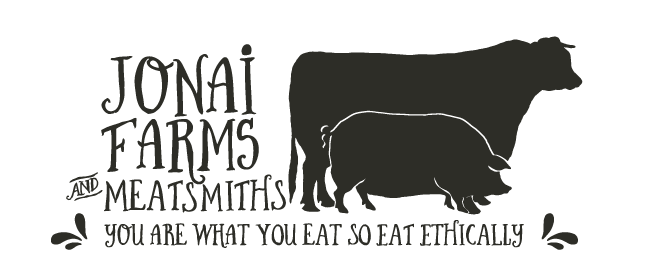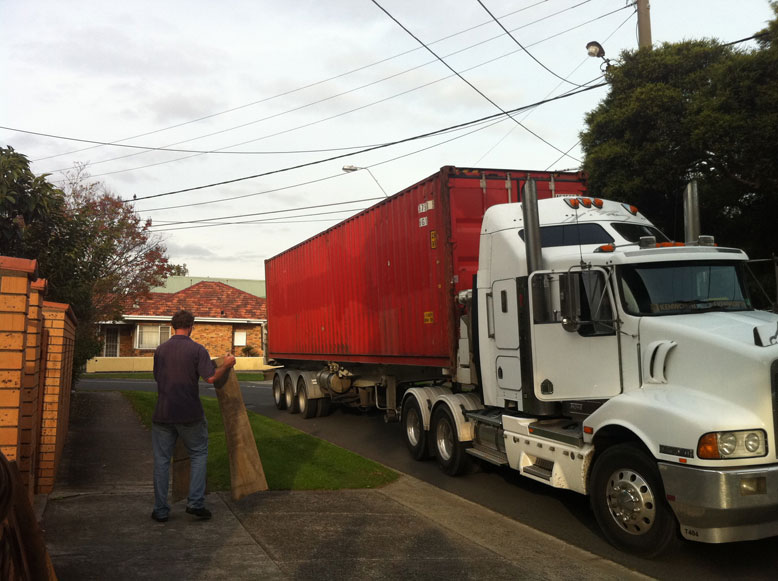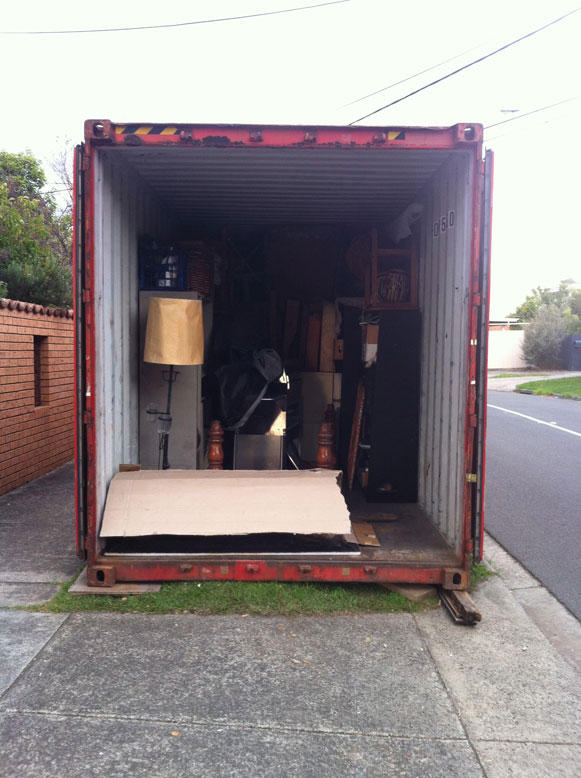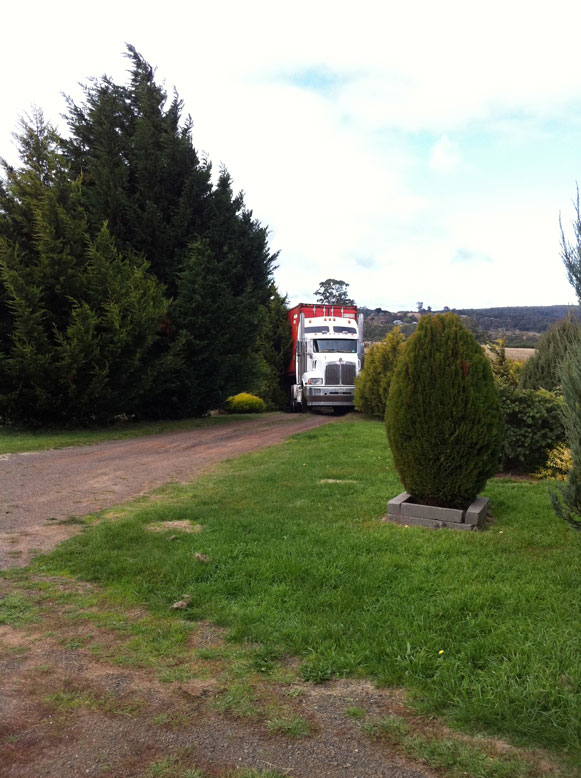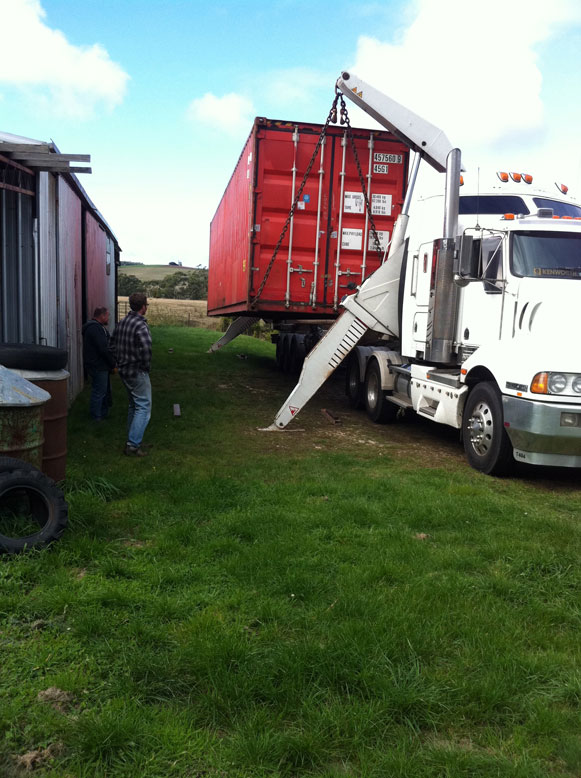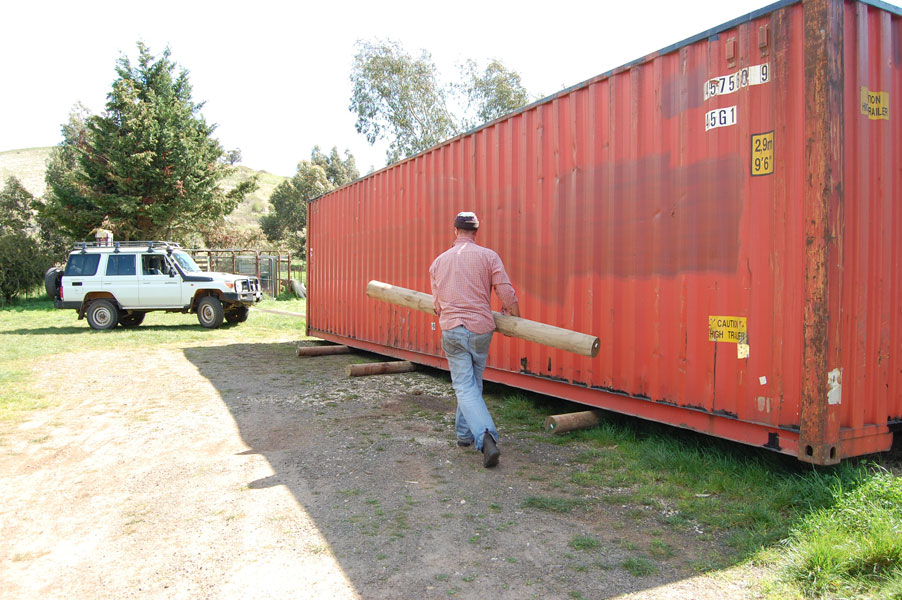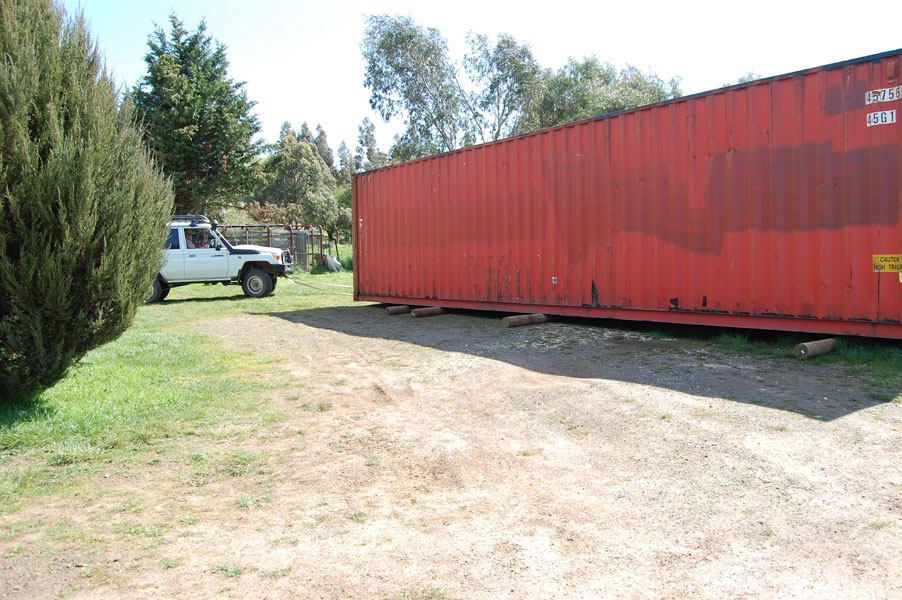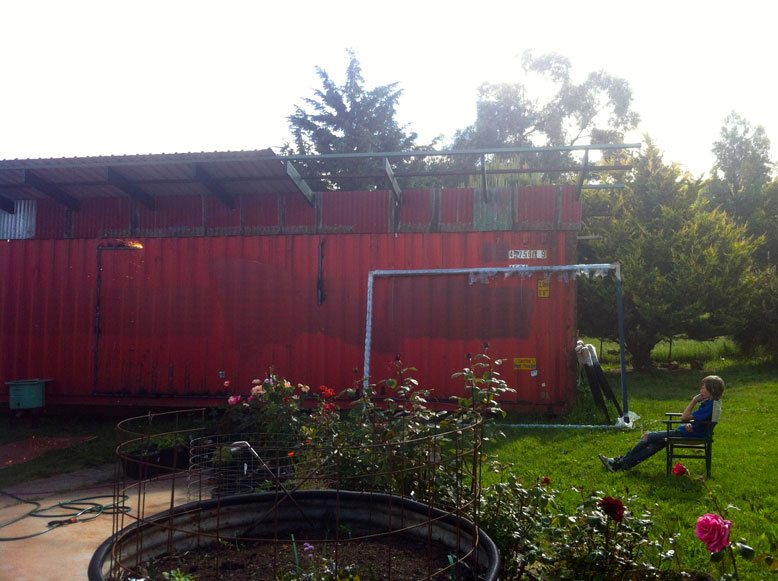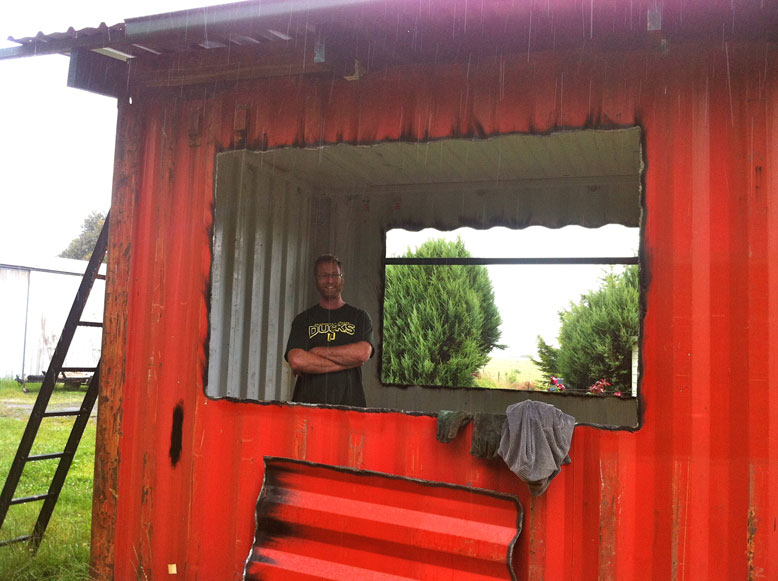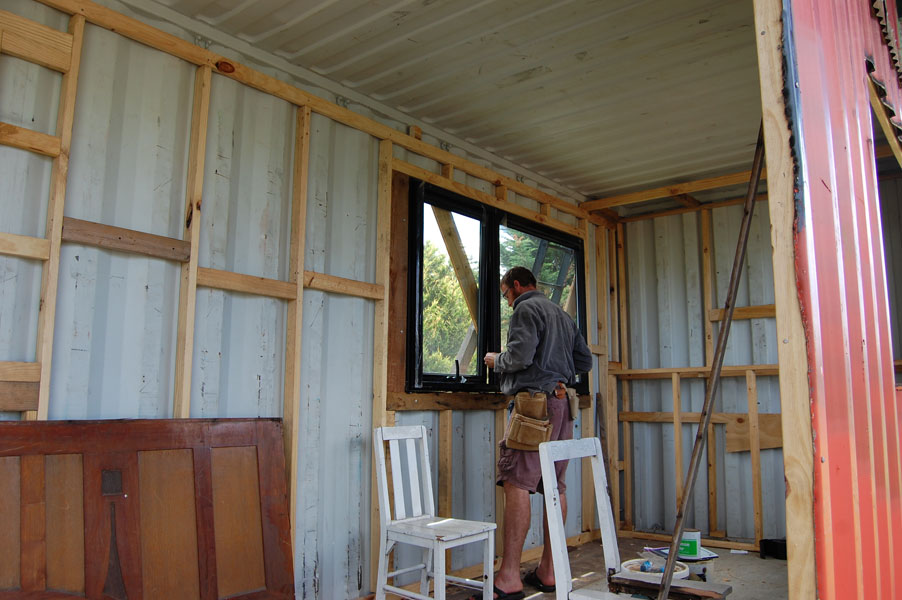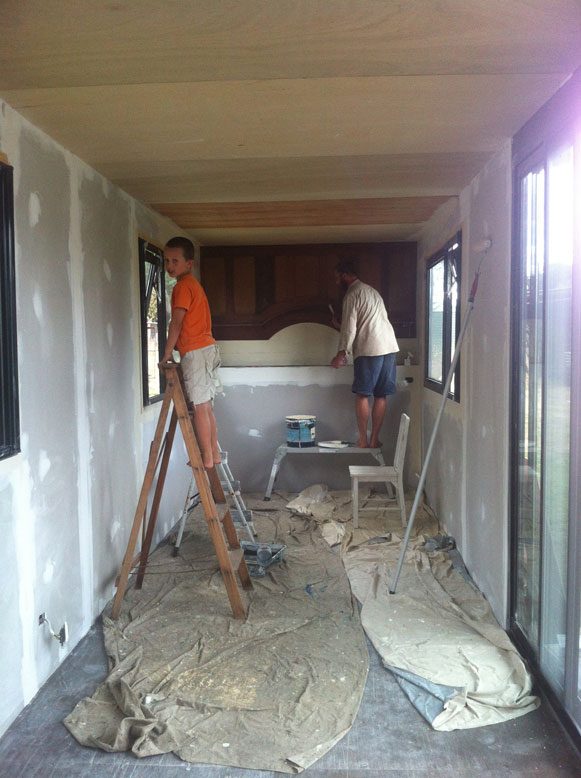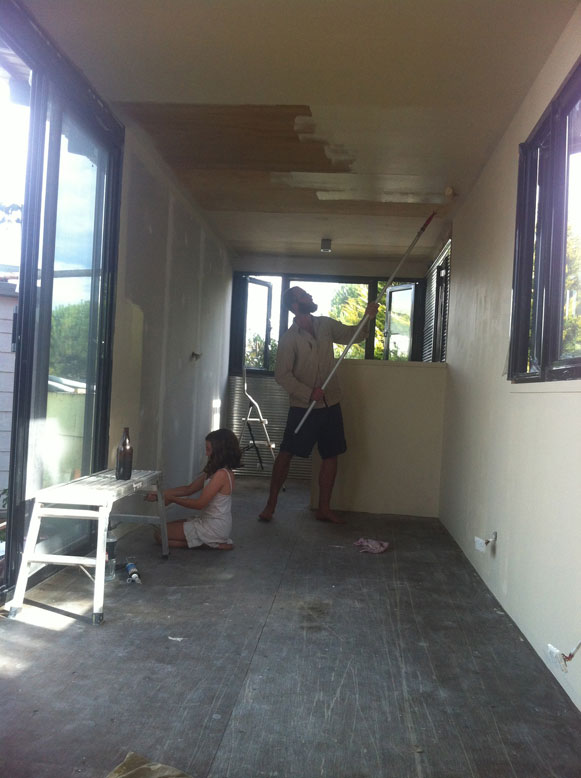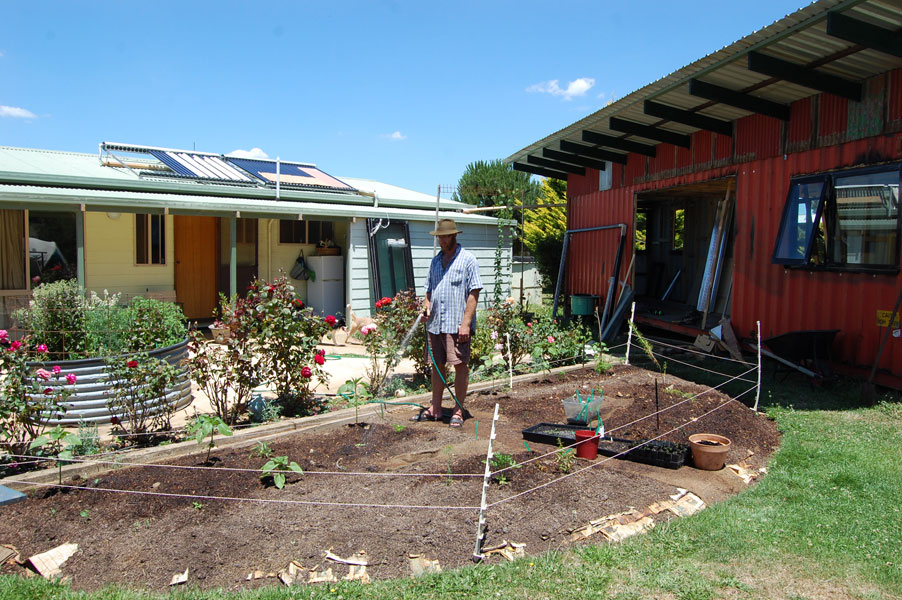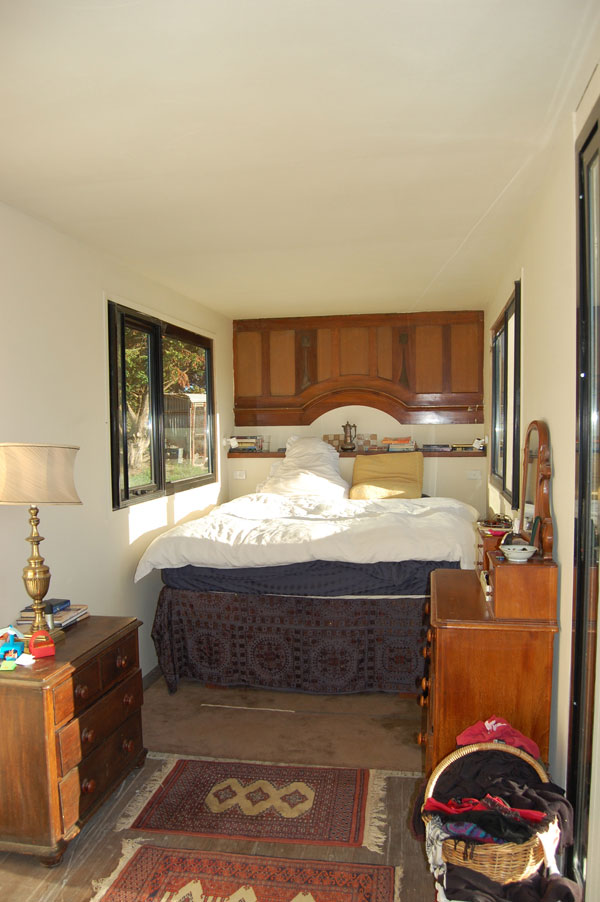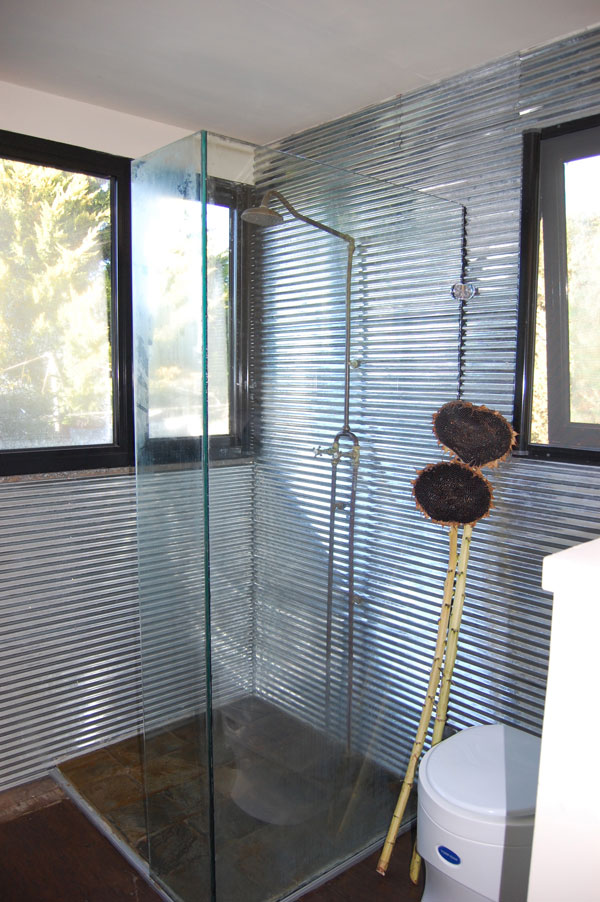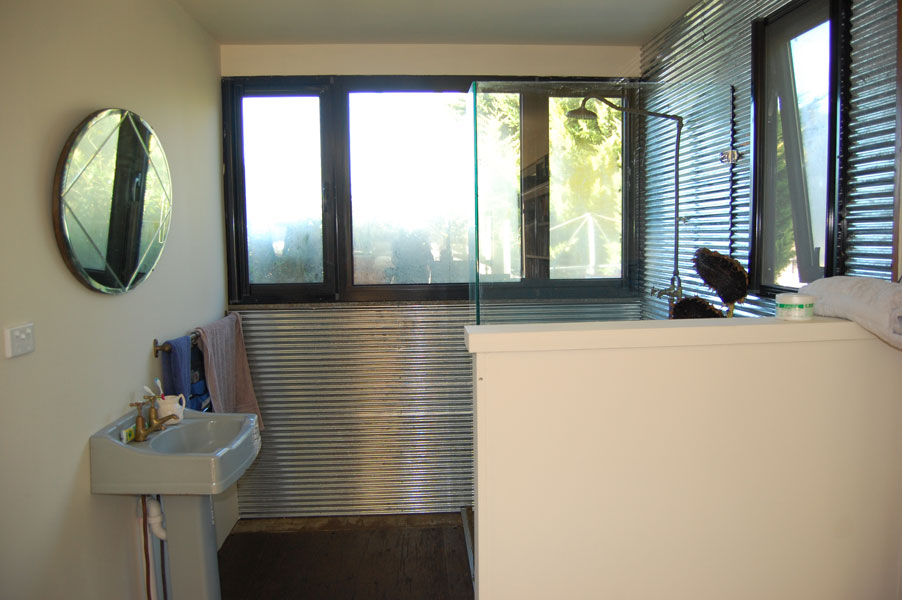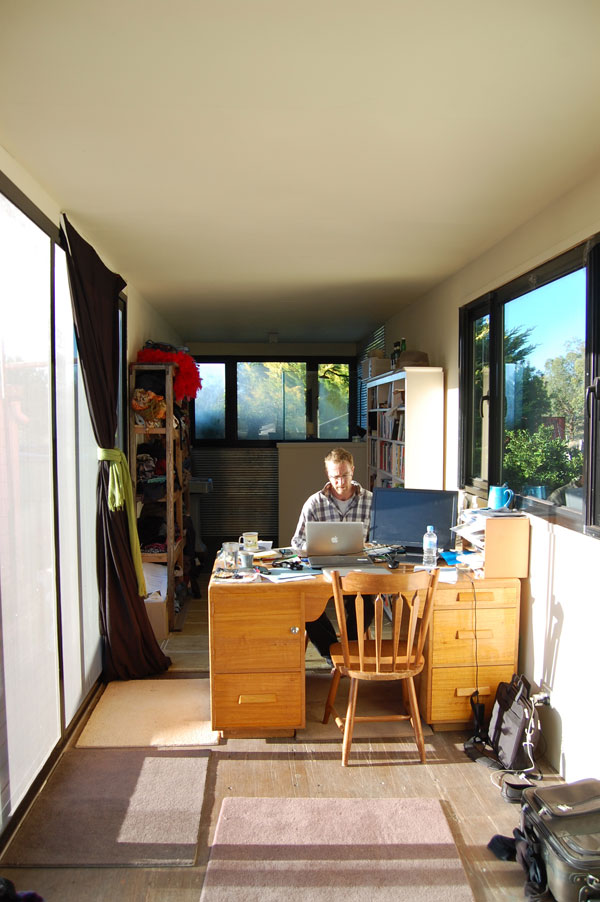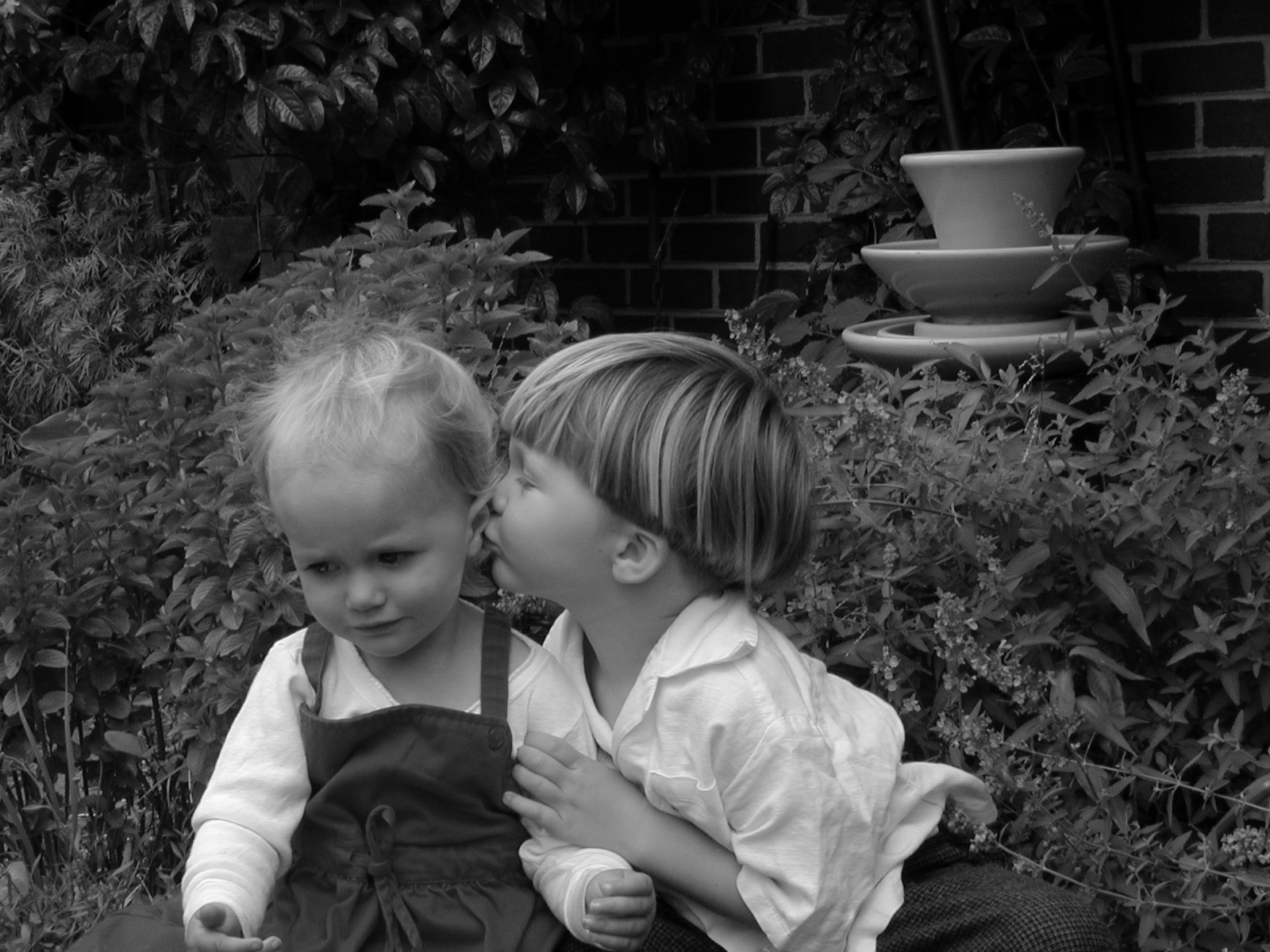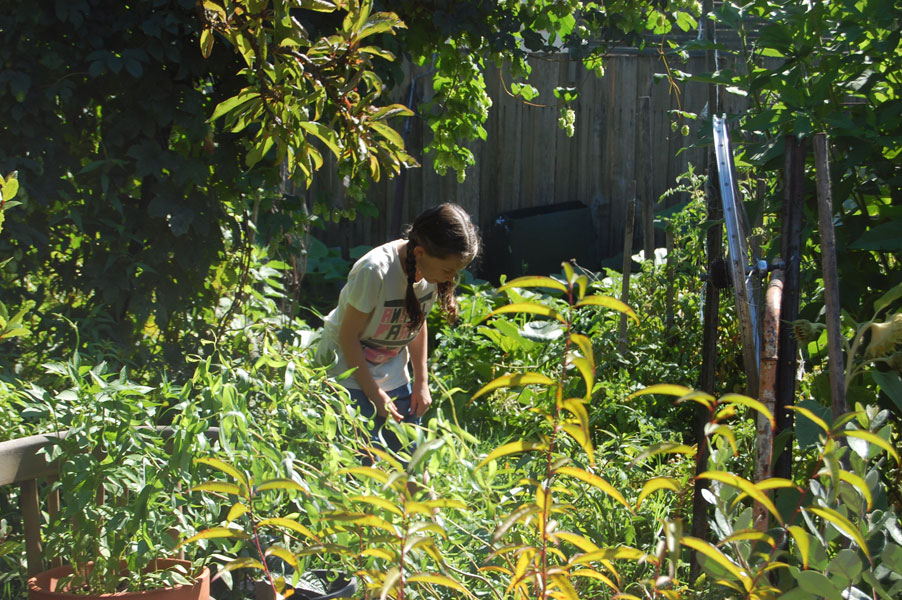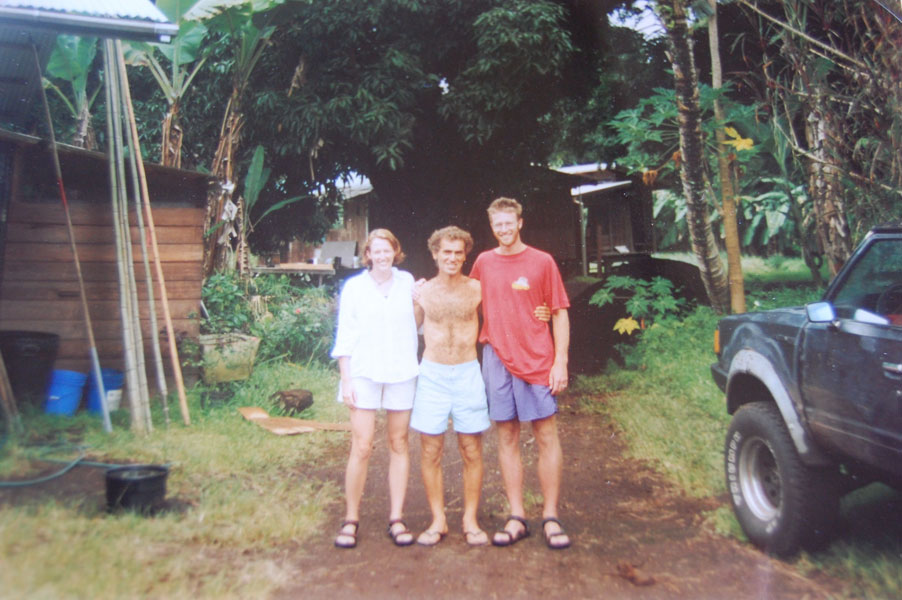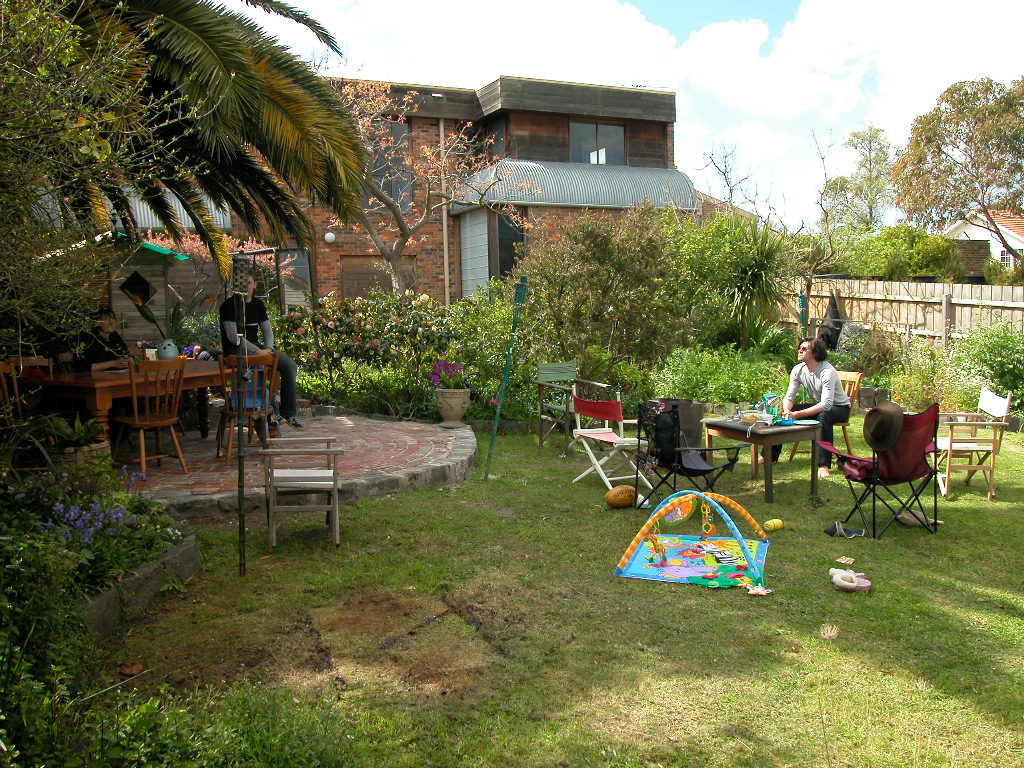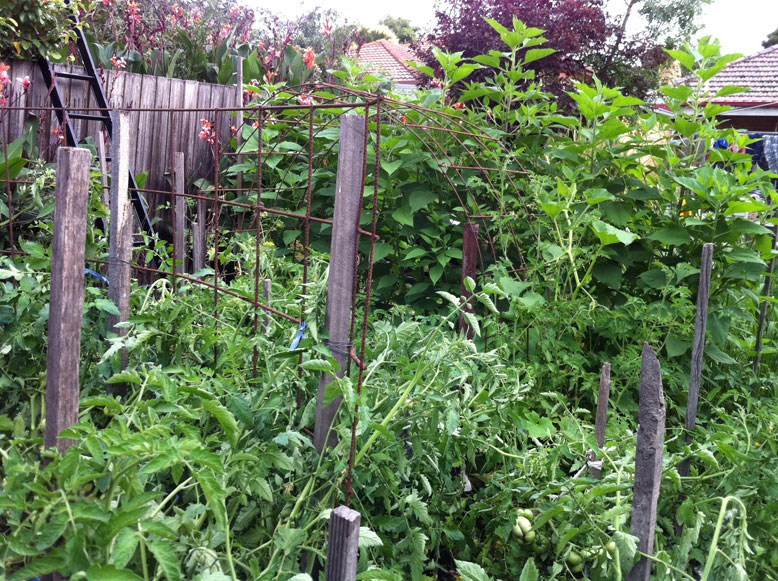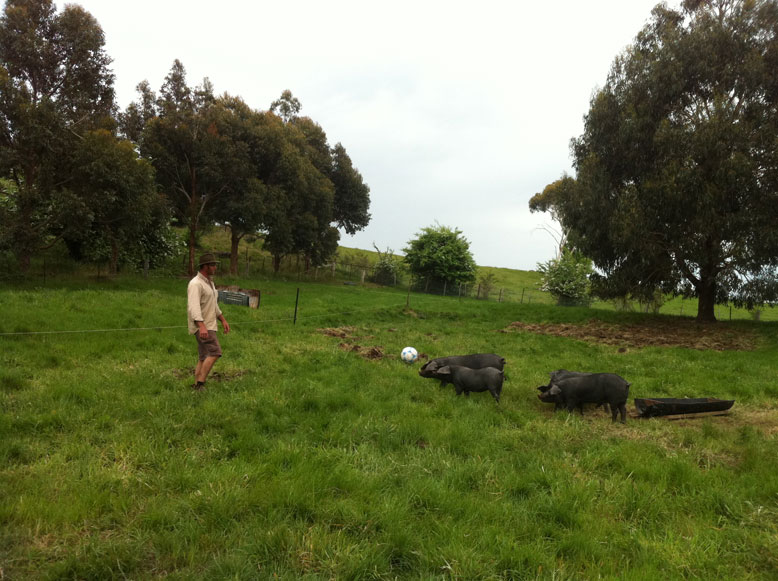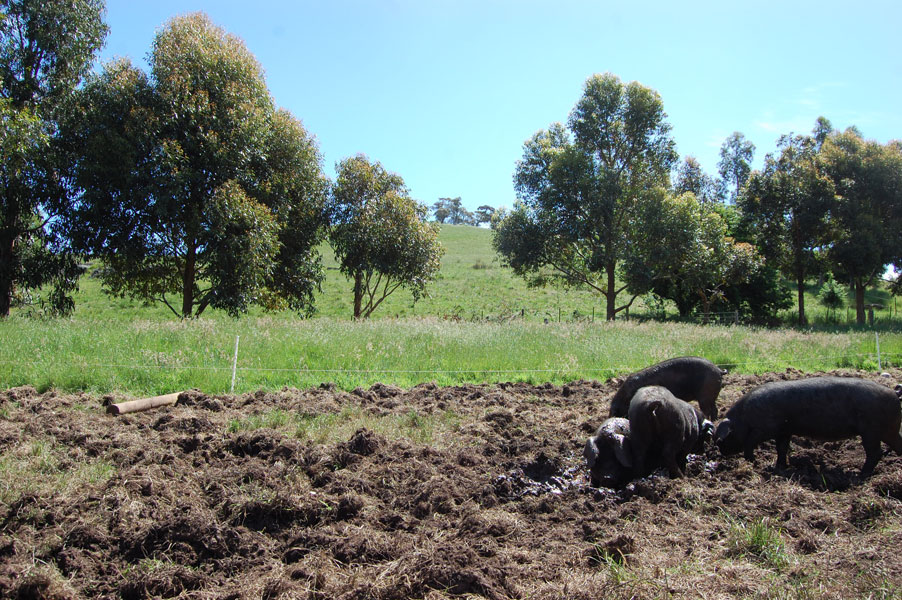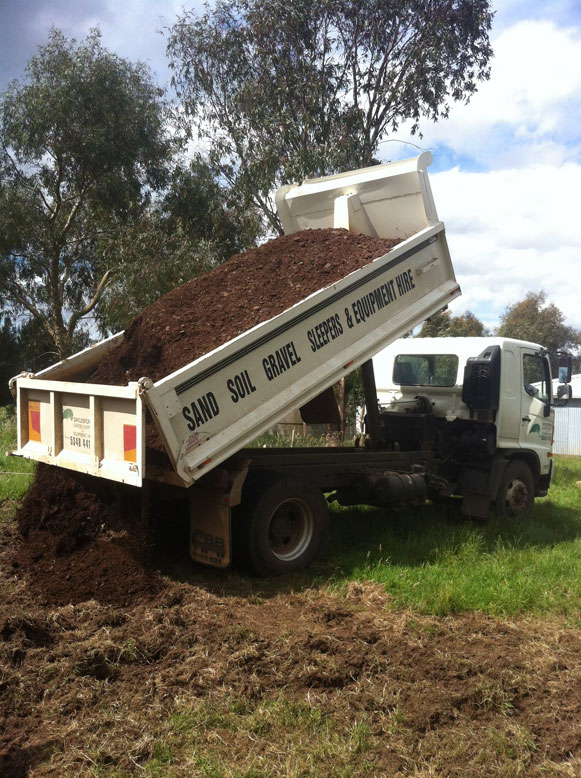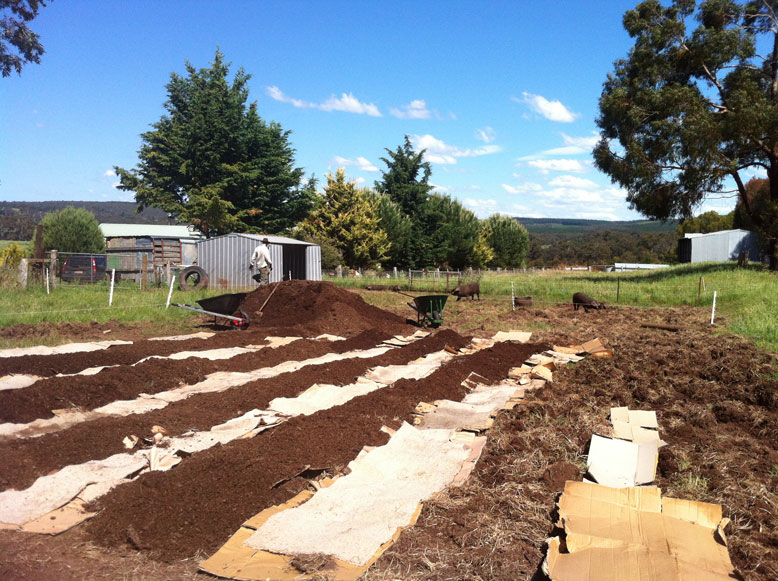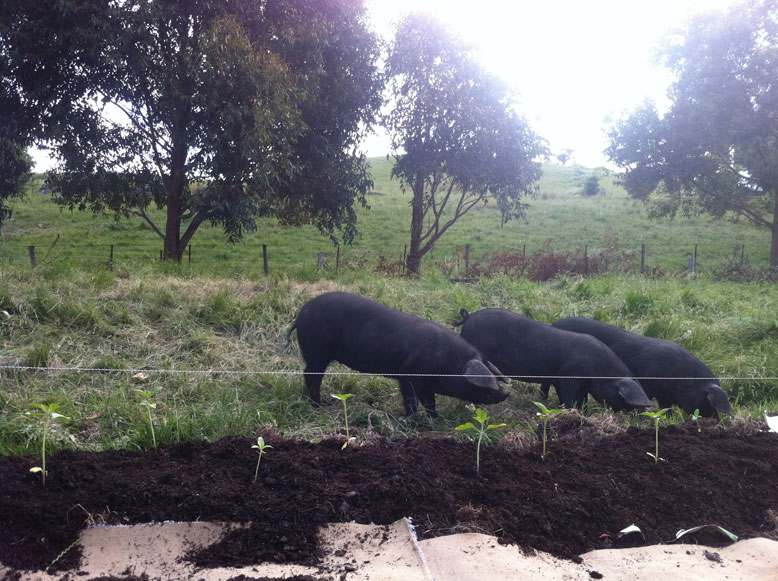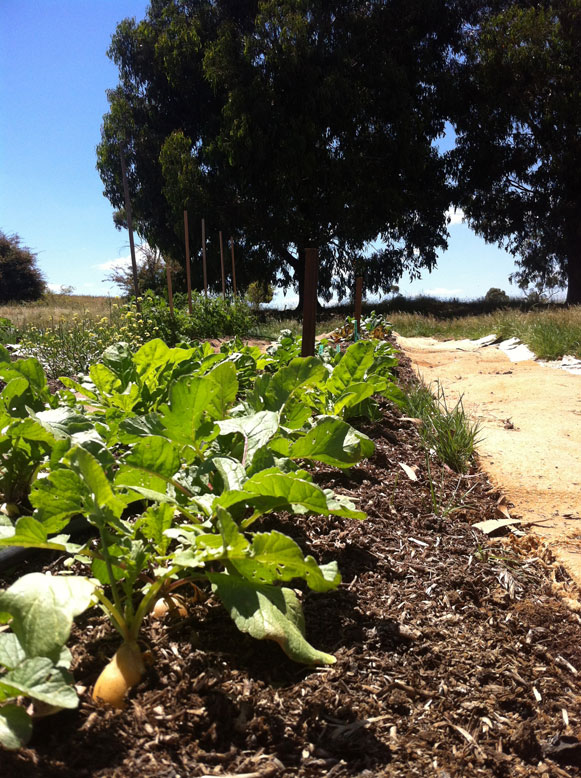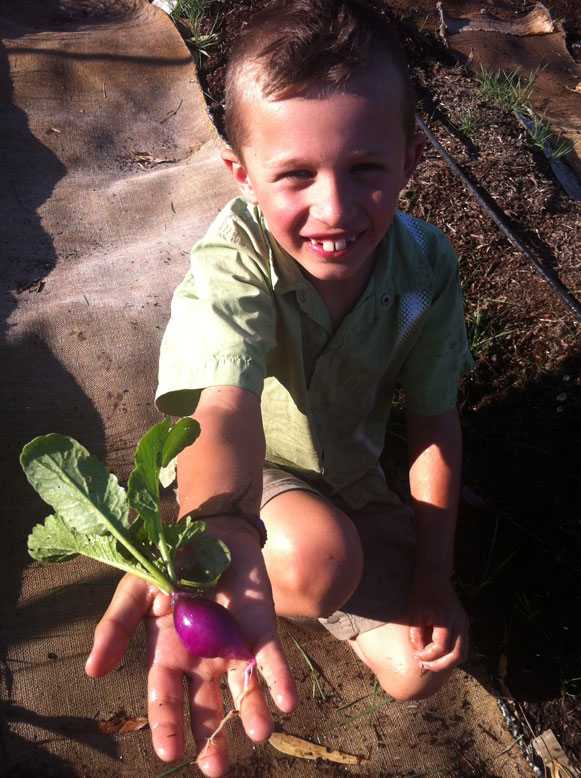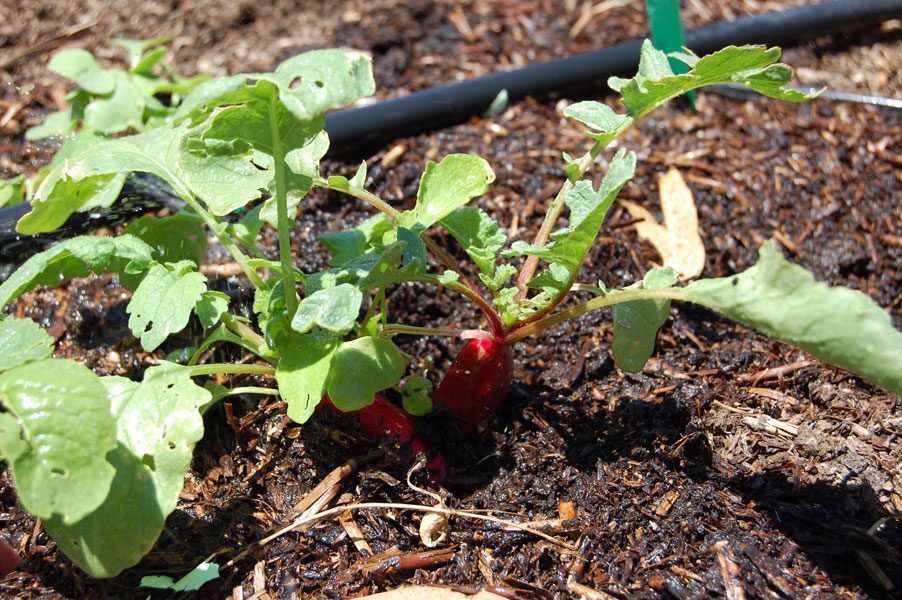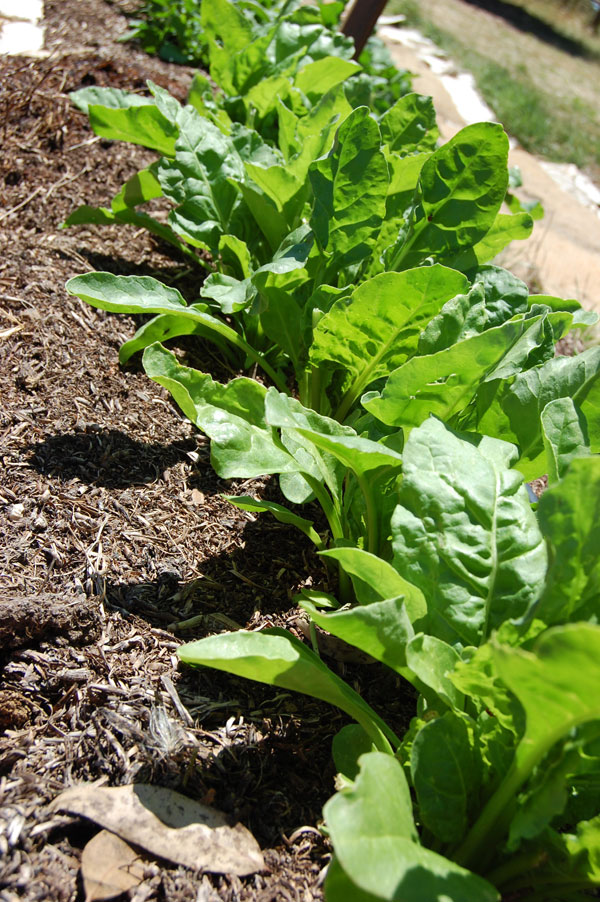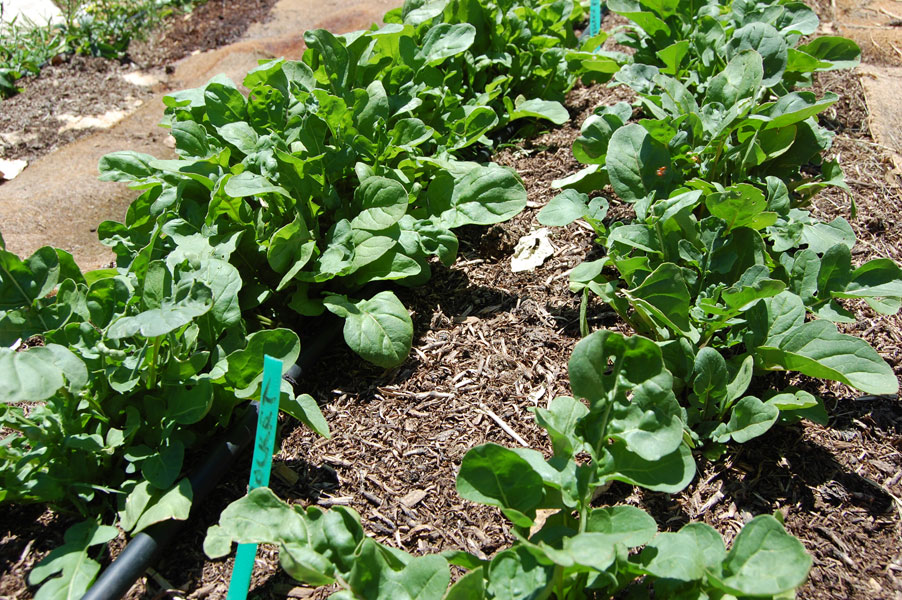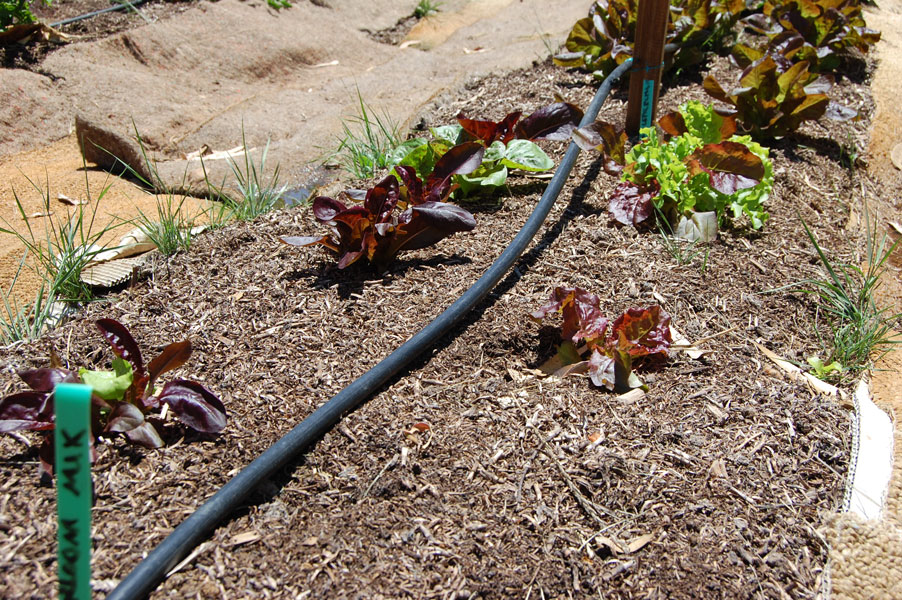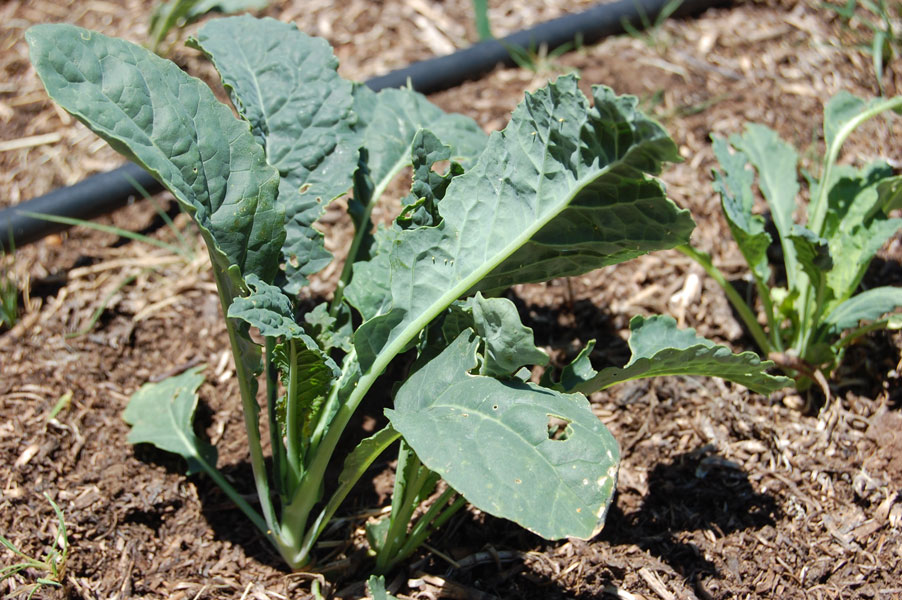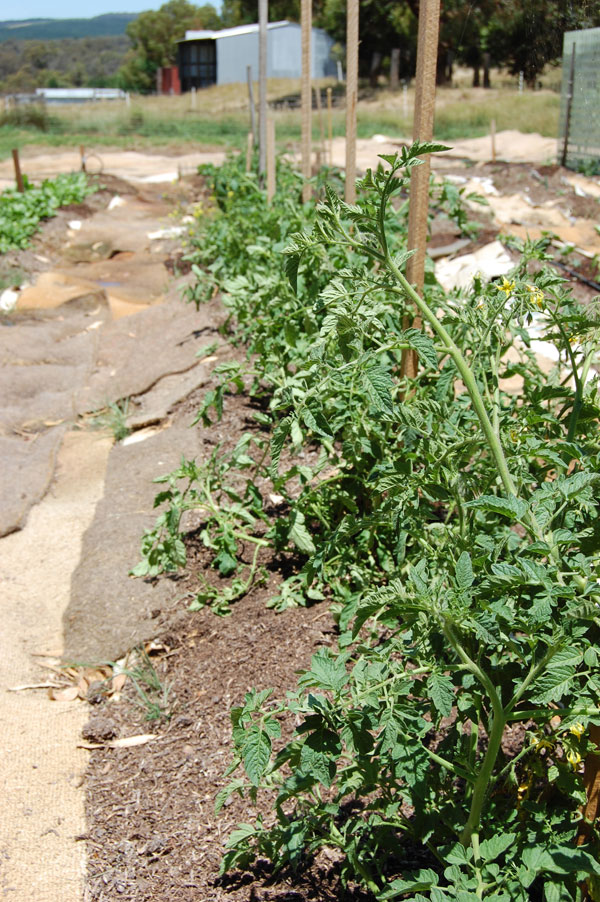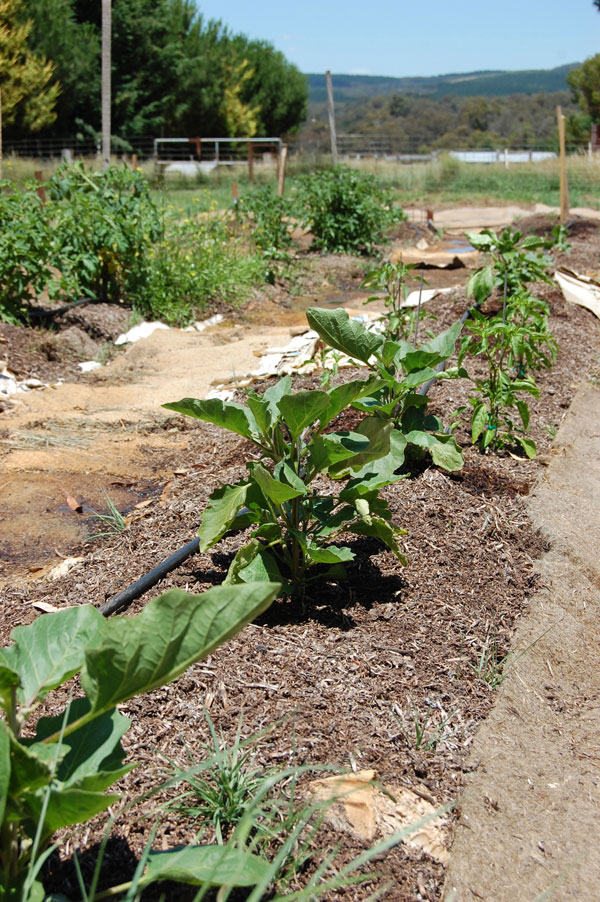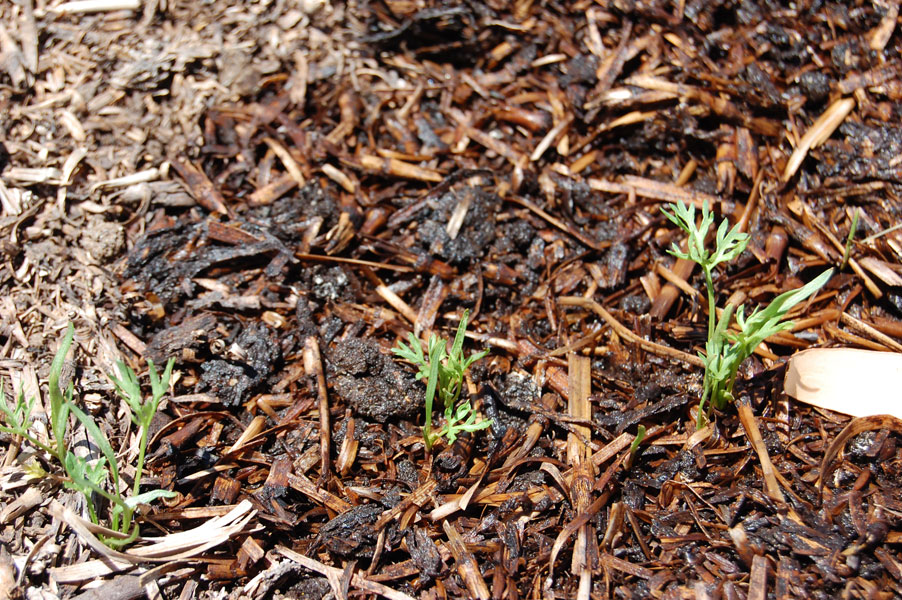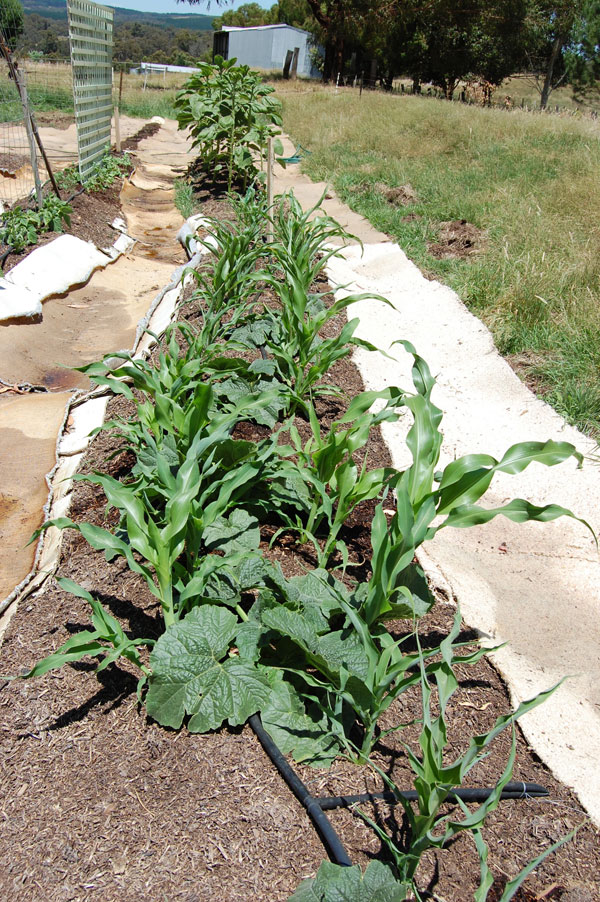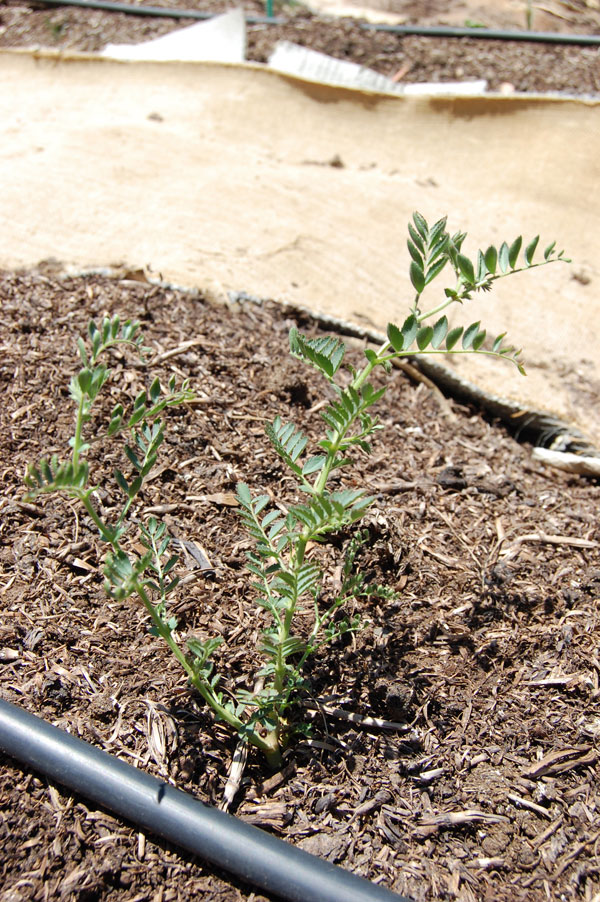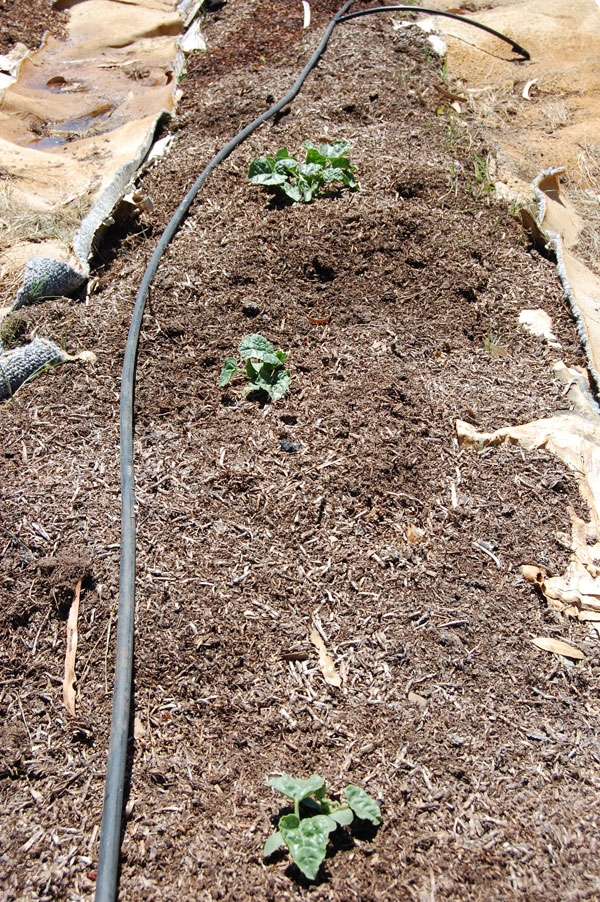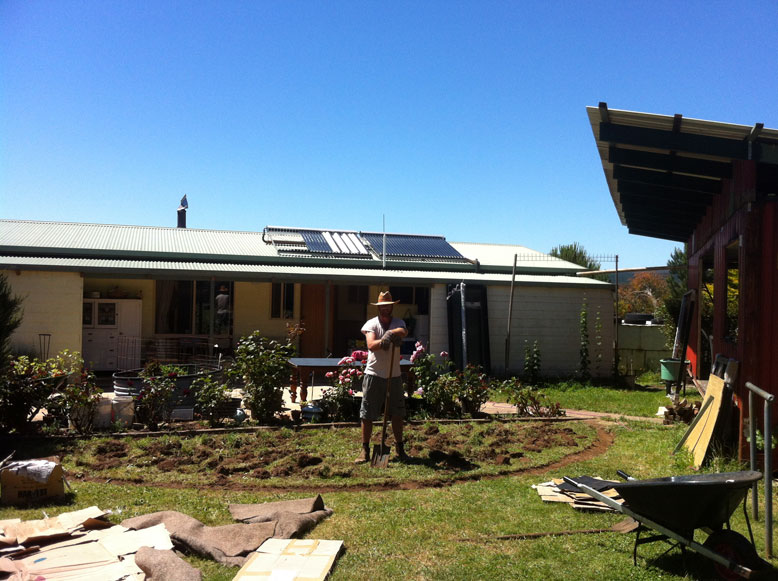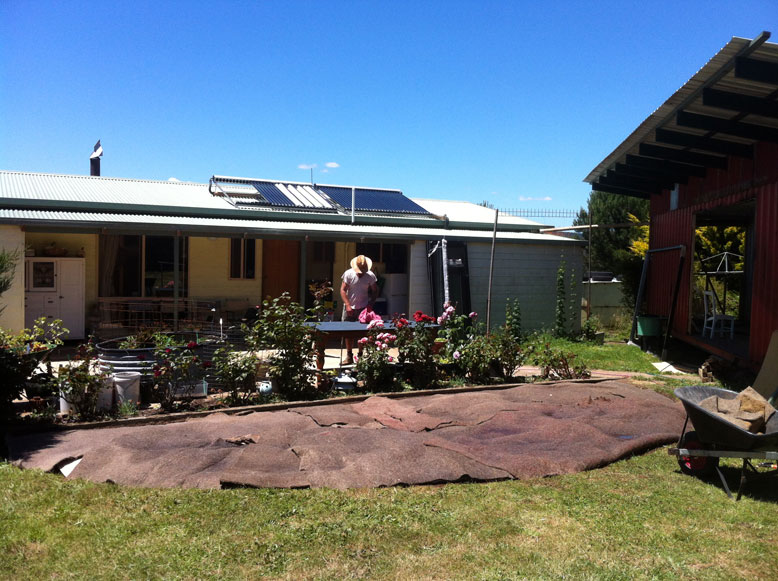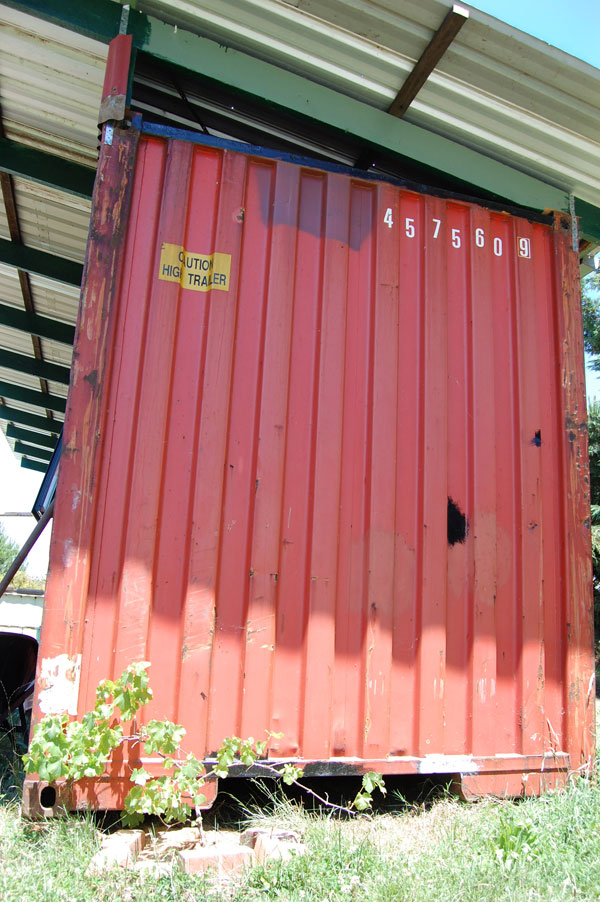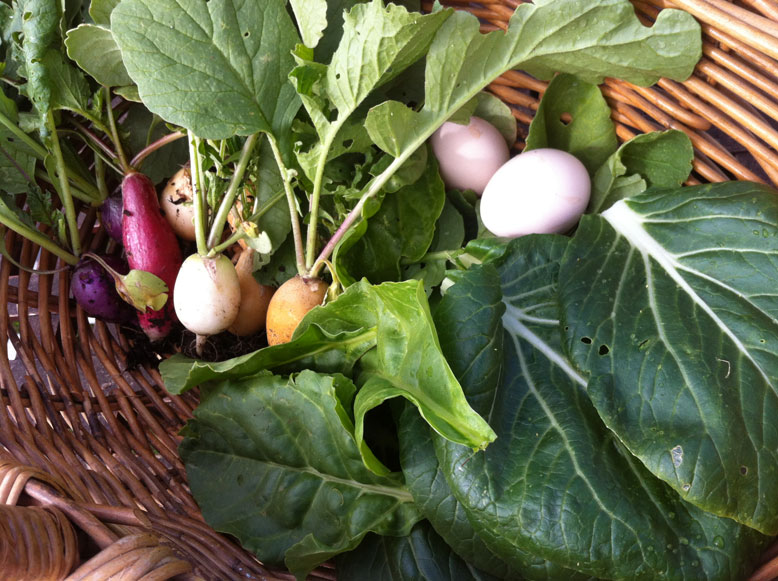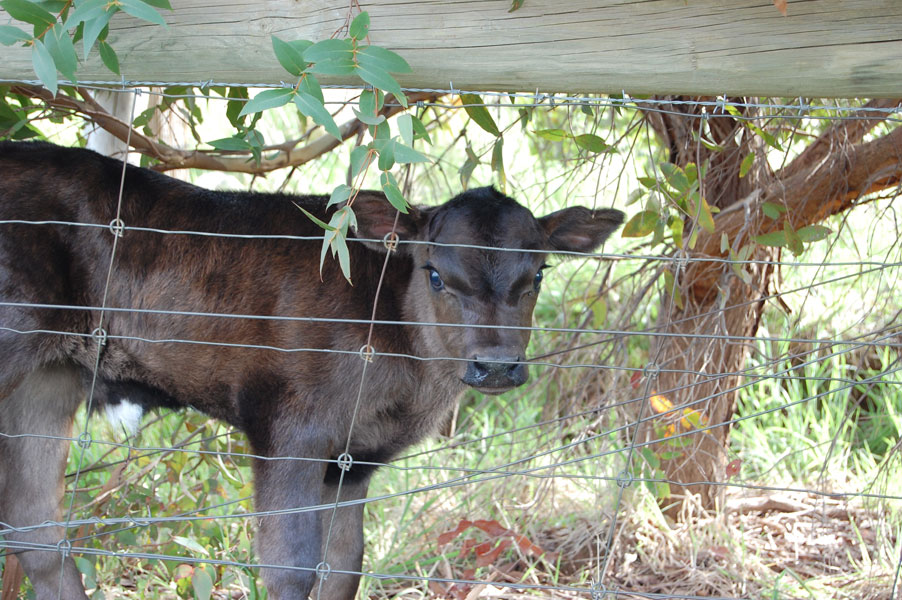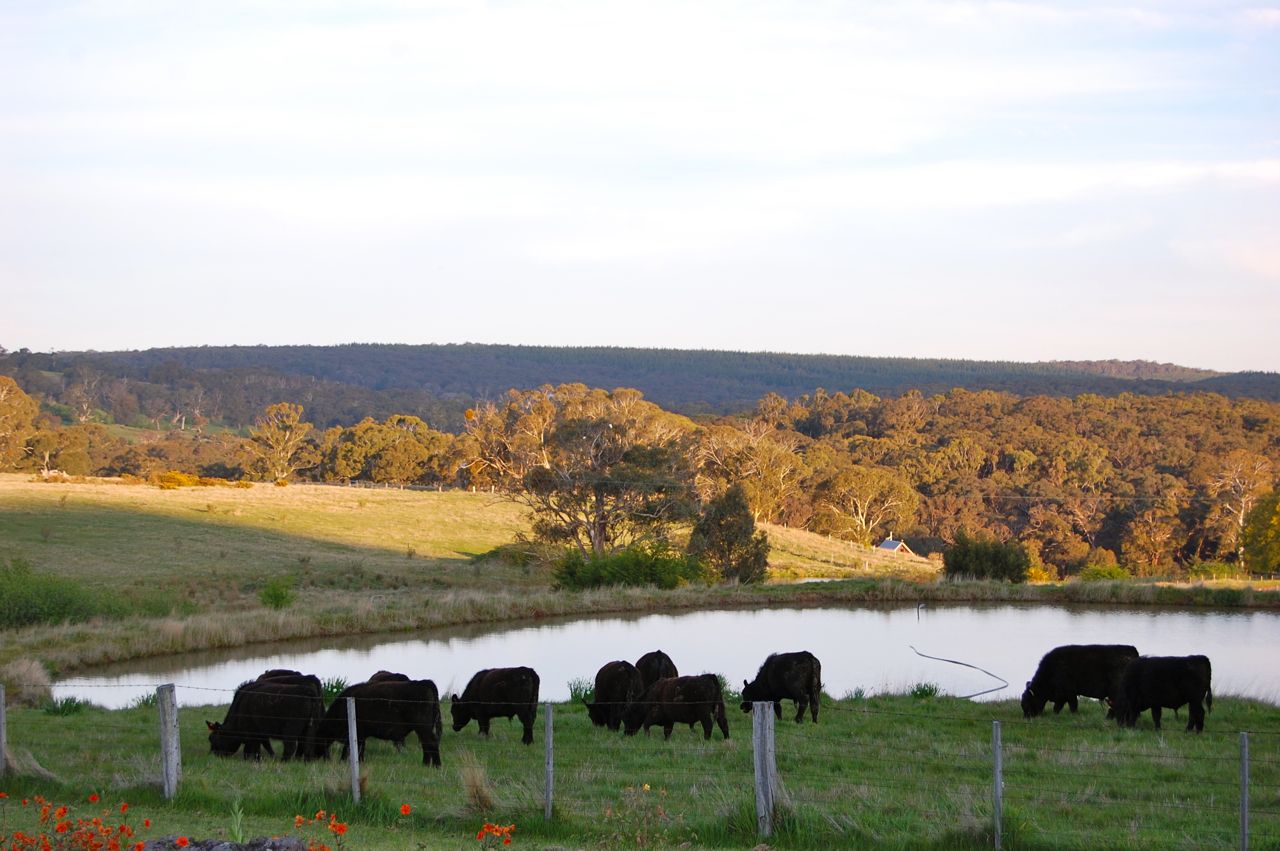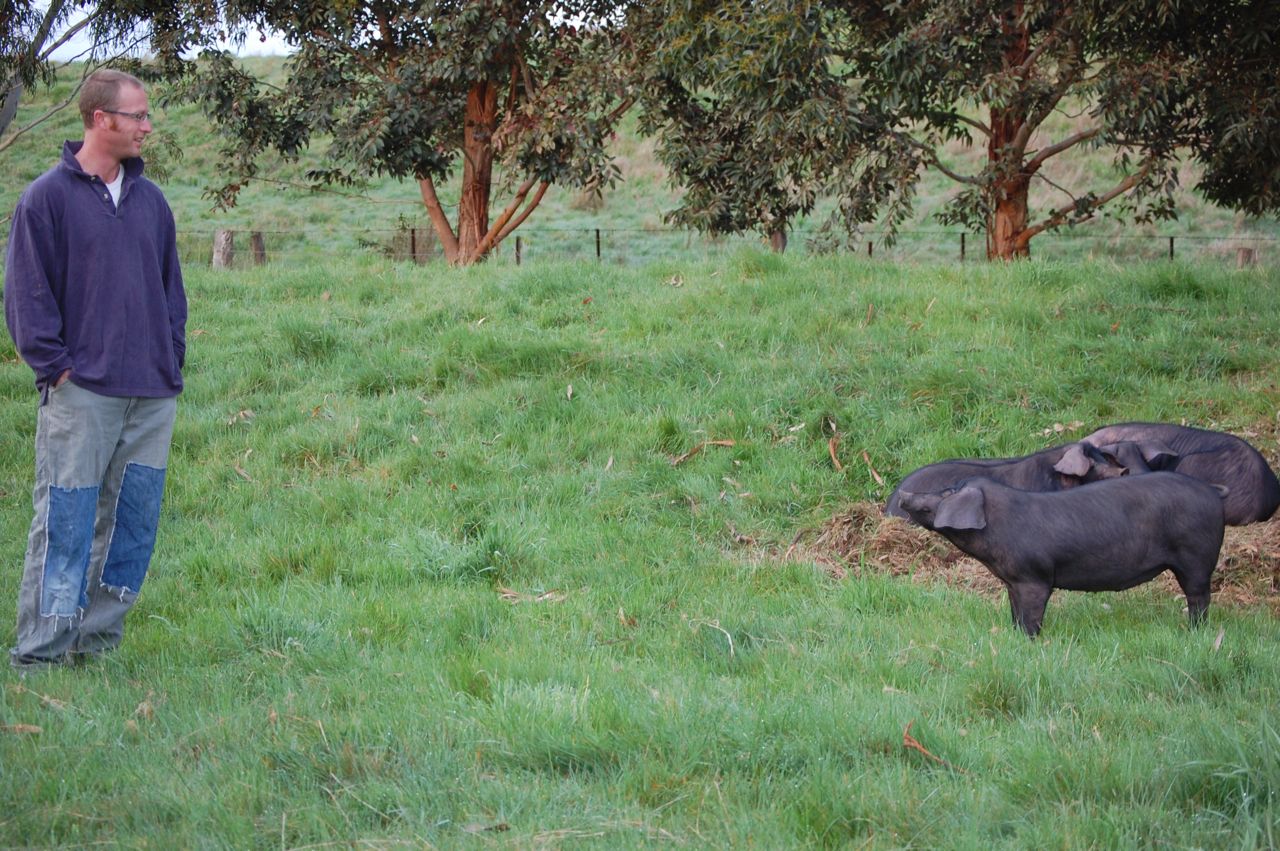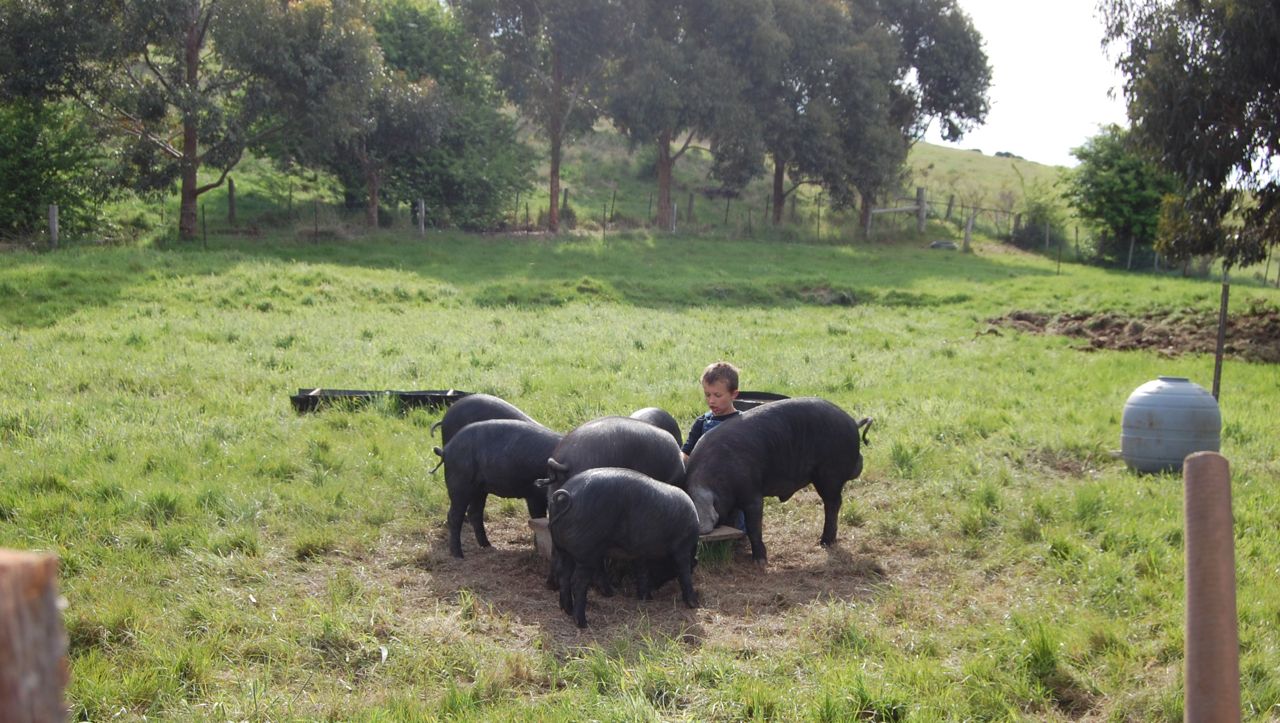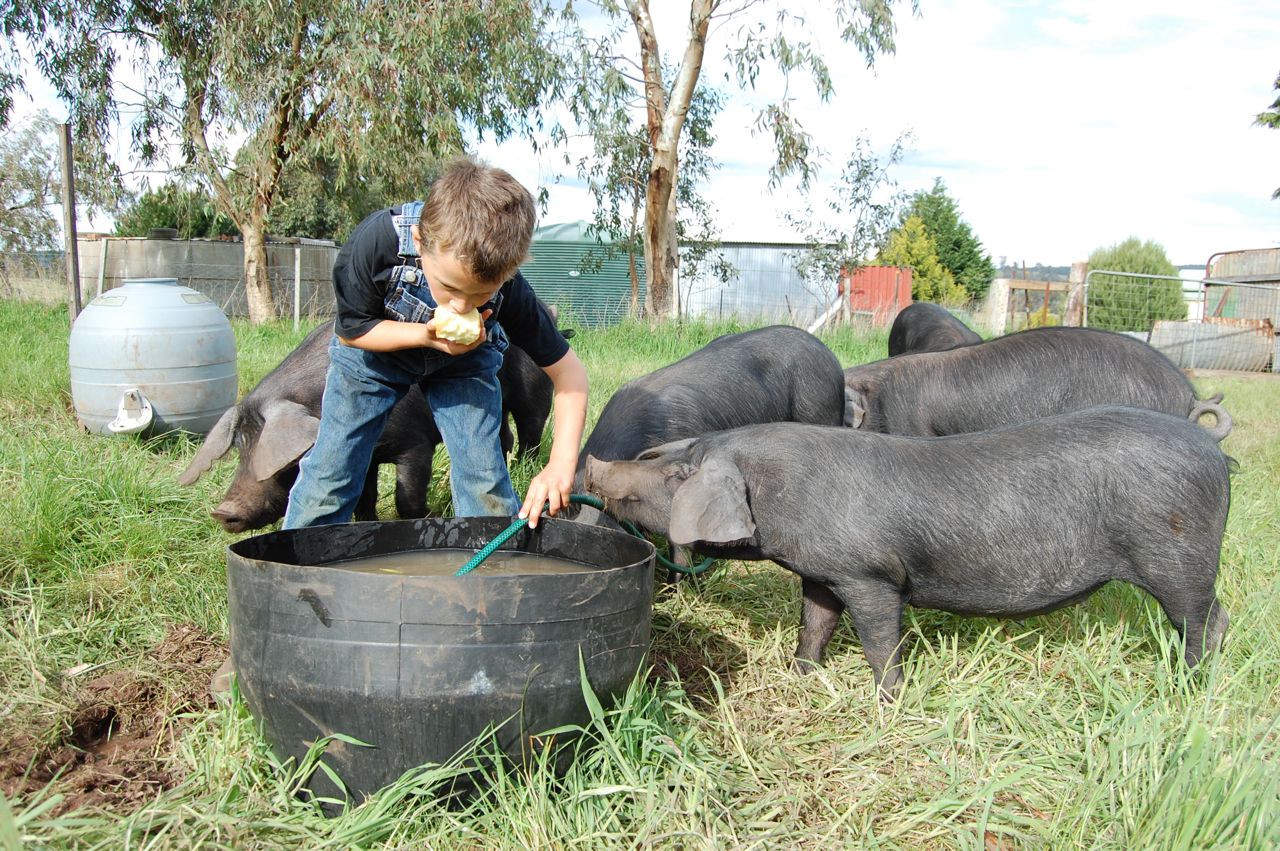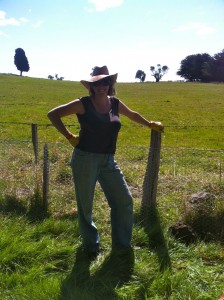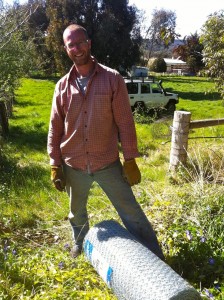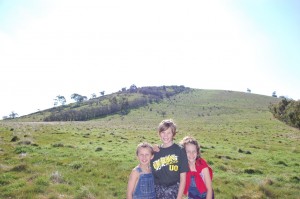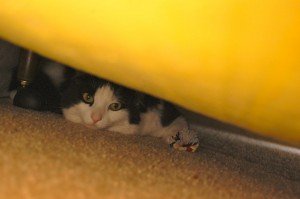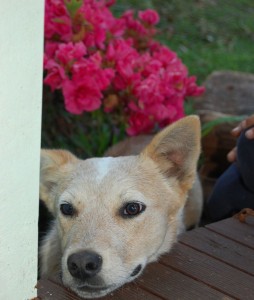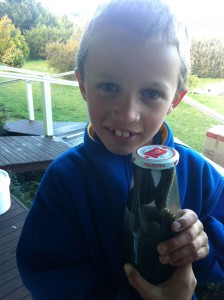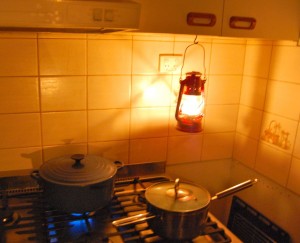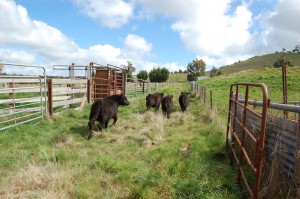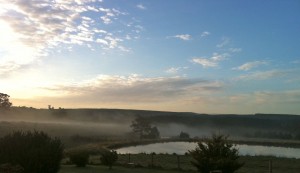In May 2011, we had a moving/storage/accommodation challenge. We needed to move all our material trappings from Melbourne up to our new farm near Daylesford, but store them for four months while we traipsed across America, and then accommodate our growing (vertically, not numerically) family in a small three-bedroom house on the farm. The obvious solution was a shipping container for all three jobs. That’s how we came to buy a high-top 40-foot container rather than simply hiring one to do our move. It cost us $2500, plus $500 to get it delivered to us in the suburbs and then hauled up to Daylesford.
The day the container arrived, we watched in trepidation lest the truck’s cranes broke the low wires overhead…
Then we filled it up… to the top, grateful we had an enormous shed at the other end to supplement our new little house…
Our intrepid truckie, Bluey, arrived to collect the now-heavy container, and drove it fearlessly through the rain and up our slippery, narrow driveway onto the farm. I held my breath the entire time, certain there was a very expensive towing bill in our near future, but Bluey was amazing, and our life’s treasures were planted carefully in front of the shed to wait out the winter while we gallivanted off to a life-changing northern summer.
25,000km of flying, 7000km of driving and a full season later, we returned to commence our new life as farmers. Our design for the interior of the container was inspired by the RockVan (a 1977 GMC motorhome), which had terrarium-like windows that made us feel constantly connected to the outside world. I demanded my bed replicate the RockVan pleasures of waking to the gentle visage of trees and sky, and embed the night sky’s constellations in tranquil sweet dreams.
I had imagined cranes and costs and the stress of working with contractors to move the container into position as our new bedroom/office with ensuite, but Stuart had better ideas. All we had to buy were some pine fence posts, which we needed anyway for, well, fencing, and borrow Stuart’s folks’ 4WD. Oh, and faith. 20 years with this man has taught me faith…
Stuart dragged the container into place, using eight round fence posts as rollers. In total, he had to move it about 50m, and 90 degrees. Genius. He then jacked it up and put pad footings with brick piers under each corner.
The building commenced in earnest then, with the roof we had pulled off the house’s superfluous, low carport becoming a fabulous feature on the container.
Stuart ordered double-glazed, aluminium-framed windows and doors for this and another 20-foot container due to be converted next for guests (The Guest Container…) for a total of $5500, including delivery, of which about $3500 was for the big container. Stuart wanted me to be sure to warn you all about dealing directly with suppliers in China, as quality can vary, and the logistics require a lot of knowledge and time, but he has been dealing with manufacturers there for the past 10 years.
He cut the door and windows out with an oxy torch, which he learned how to use by watching YouTube videos… (nobody mention The Infamous Thumb Injury.)
He framed up the inside and we installed the (very heavy!) windows, before fully insulating - the roof is reflective aircell, and the walls are a mixture of secondhand and new recycled pink batting (R2.0). We got an electrician in for the day to wire everything up at a cost of about $1000. Stuart roughed in the plumbing himself for the bathroom.
The walls were then skinned with plasterboard, and painted entirely with paint sourced from the local waste transfer station.
The panelling above our bed was a discovery from underneath one of the houses we used to live in, and because the container is quite narrow, Stuart built a shelf at our head for books and bits. The bed is also intentionally quite high to capture that feeling of sleeping in the garden we had experienced through the glorious state parks of America, as mentioned above. :-)
We lined the bathroom with corrugated tin to maintain the industrial/Australian aesthetic, found a pedestal sink at the waste transfer station, and bought a fancy composting toilet for $600.
The shower has exposed copper plumbing (another score from under our old house), a slate floor with stone sourced at the Trentham secondhand building supplier’s for $30, and tempered glass from the same source that cost us $100.
Stuart sealed the beautiful hardwood floor in the bathroom, we hung an old mirror we inherited somewhere over the last decade, and we’re on the lookout for a charming little old bathroom cupboard. A brass towel rail completes the picture.
So all up, our ‘parents’ retreat’ cost us about $9000 - that includes purchase, delivery and all building materials - which we reckon is pretty good, especially since it also bought us four months’ storage of all our belongings and our entire move up here!
Working in the container is incredibly pleasant, as the room is full of light from so many windows, and consistently warmer or cooler than the poorly insulated house with its single-glazed windows. It also gives us a genuine retreat from the kids, who, no matter how beloved they may be, are still noisy in the way of children…
The only thing the container can’t contain is our joy at being here, on the farm, in such lovely trappings. :-)
